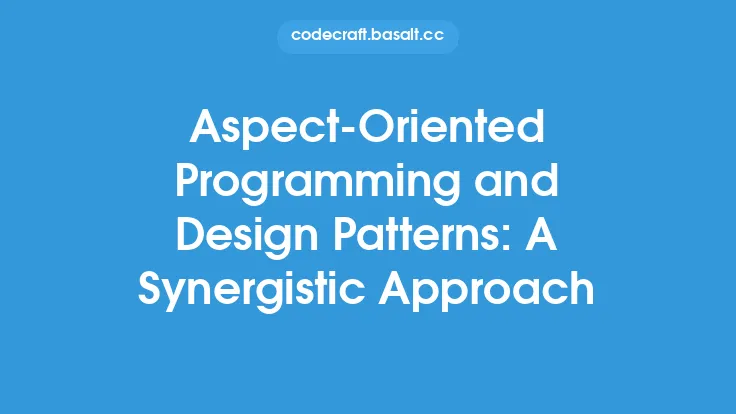Aspect-Oriented Programming (AOP) is a programming paradigm that focuses on separating concerns and modularizing cross-cutting concerns in software development. The primary goal of AOP is to increase modularity, reusability, and maintainability of software systems by providing a way to modularize concerns that cut across multiple objects and modules. In traditional object-oriented programming (OOP), concerns are often scattered throughout the codebase, making it difficult to maintain and evolve the system over time. AOP addresses this issue by providing a way to separate concerns and modularize them in a way that is independent of the core business logic.
Separation of Concerns
Separation of concerns is a fundamental principle of AOP that involves breaking down a software system into smaller, independent components that address specific concerns. Concerns can be functional or non-functional, and they can be related to various aspects of the system, such as security, logging, caching, or error handling. The idea is to identify and separate these concerns in a way that allows them to be developed, tested, and maintained independently of each other. This separation of concerns enables developers to focus on specific aspects of the system without affecting other parts of the codebase.
Modularization
Modularization is another key principle of AOP that involves organizing concerns into modules that can be composed and reused throughout the system. Modules in AOP are typically implemented as aspects, which are self-contained units of code that encapsulate a specific concern. Aspects can be woven into the core business logic at specific points, called join points, to provide additional functionality or behavior. The modularization of concerns through aspects enables developers to create more flexible and adaptable software systems that can be easily extended or modified as requirements change.
Aspect-Oriented Programming Concepts
AOP introduces several new concepts that are essential to understanding the paradigm. These concepts include aspects, join points, pointcuts, and advice. Aspects are the modular units of code that encapsulate a specific concern, while join points are the points in the code where aspects are woven. Pointcuts are used to specify the join points where an aspect should be applied, and advice is the code that is executed when an aspect is woven into the system. These concepts work together to provide a powerful way to modularize and separate concerns in software development.
Benefits of Aspect-Oriented Programming
AOP provides several benefits that make it an attractive programming paradigm for software development. These benefits include improved modularity, increased reusability, and enhanced maintainability. By separating concerns and modularizing them through aspects, developers can create software systems that are more flexible and adaptable to changing requirements. AOP also enables developers to reduce code duplication and improve code readability, making it easier to understand and maintain complex software systems.
Challenges and Limitations
While AOP provides several benefits, it also presents some challenges and limitations. One of the main challenges is the complexity of AOP concepts and the need for specialized tools and frameworks to support aspect-oriented development. Additionally, AOP can introduce new overhead and performance issues if not implemented carefully. Furthermore, the weaving of aspects into the core business logic can make it difficult to debug and test software systems. Despite these challenges, AOP remains a powerful programming paradigm that can help developers create more modular, reusable, and maintainable software systems.
Real-World Applications
AOP has been applied in various real-world scenarios, including enterprise software development, embedded systems, and cloud computing. In enterprise software development, AOP is used to implement concerns such as security, logging, and caching in a modular and reusable way. In embedded systems, AOP is used to implement real-time constraints and optimize system performance. In cloud computing, AOP is used to implement scalability and elasticity concerns in a modular and adaptable way. These applications demonstrate the versatility and effectiveness of AOP in addressing complex software development challenges.
Conclusion
In conclusion, Aspect-Oriented Programming is a powerful programming paradigm that provides a way to separate concerns and modularize cross-cutting concerns in software development. By introducing new concepts such as aspects, join points, pointcuts, and advice, AOP enables developers to create more modular, reusable, and maintainable software systems. While AOP presents some challenges and limitations, its benefits make it an attractive approach for software development. As software systems continue to evolve and become more complex, AOP is likely to play an increasingly important role in addressing the challenges of software development and maintenance.





